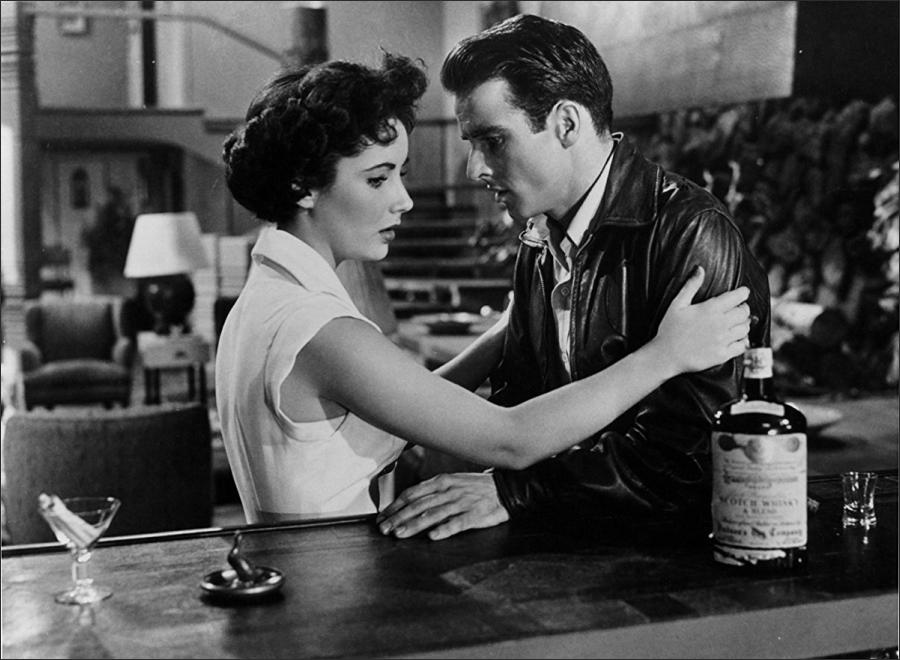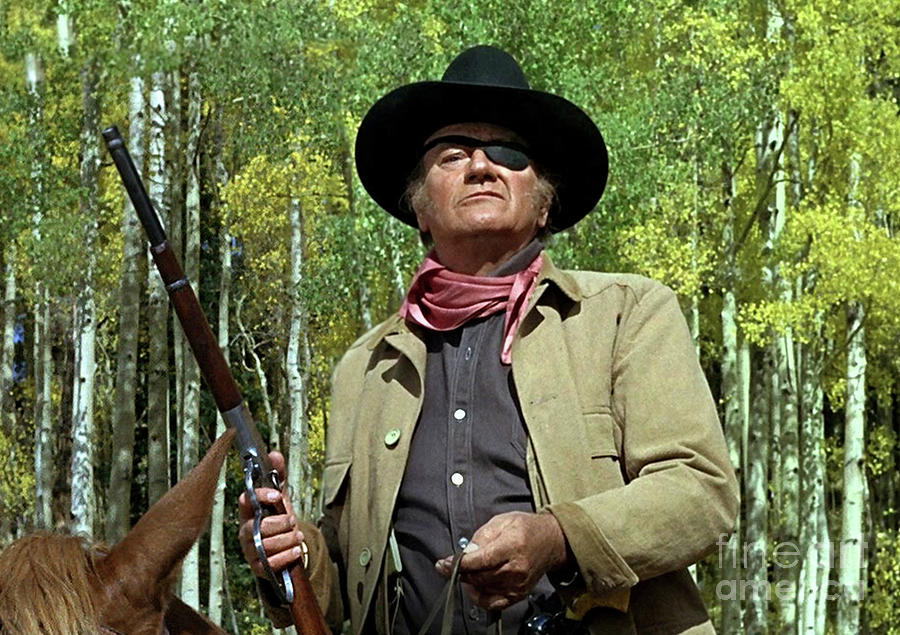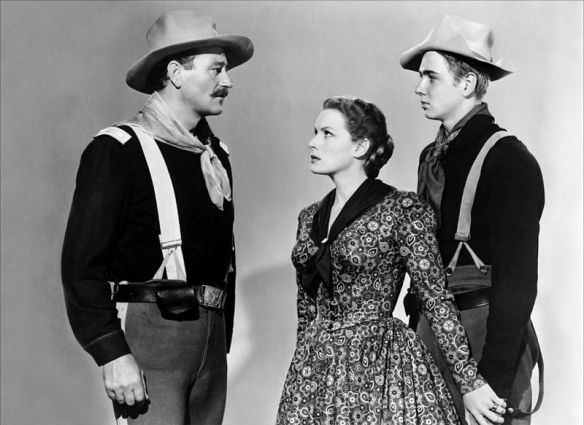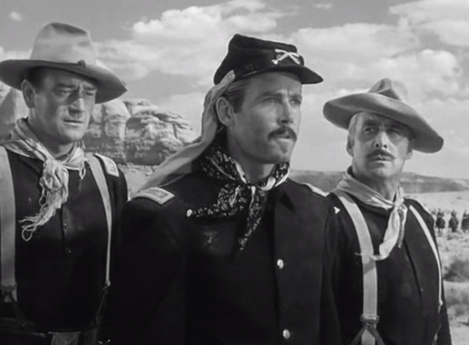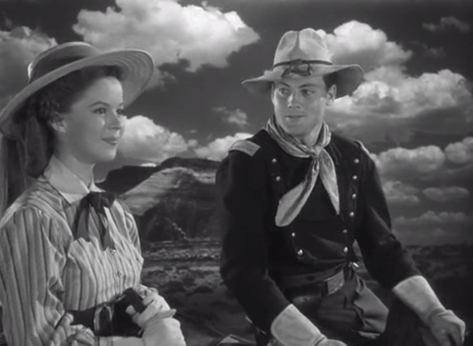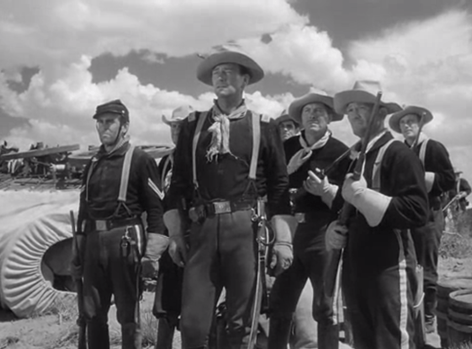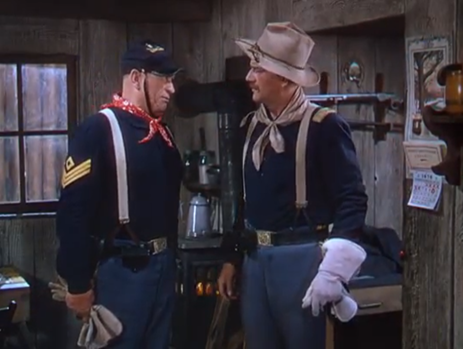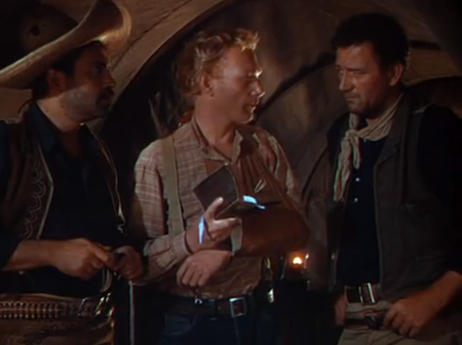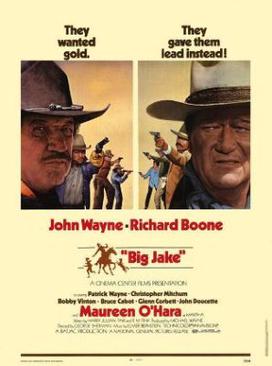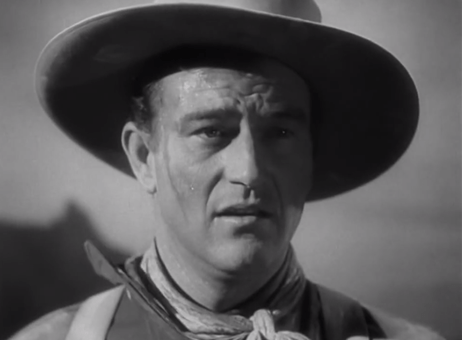
While the western hardly began with Stagecoach, one could go out on a very slight limb and say it became a more fully realized version of itself in the hands of John Ford; it all but grew in stature as a genre. This progression cropped out of the prevailing assumption of the day and age that the western was low-grade rubbish meant for no-name actors and meager productions. But Ford proved they could be ripe with so many more possibilities because he had greater ambitions from the outset.
We have John Wayne making a second go of stardom as the Ringo Kid, in what would prove a career bolstering performance, after some 70 films he’d already played in. He, of course, reemerged on the screen in a bold tracking shot and subsequent closeup that has all but impressed itself upon anyone who has ever witnessed the film. In this moment, Ford all but thrusts Wayne into the limelight as his star, for better or for worse, and Duke obliges thereafter.
Ford’s first excursion to Monument Valley proved to be love at first sight as he became so enraptured with the location — and why not — he would film there countless times in the future. It became synonymous with his finest work; he used it as the perfectly mapped canvass on which to express himself. One could argue that no director ever had a better setting, more synonymous with his vision and sensibilities.
Forget the landscape and situation for a moment. Stagecoach might be one of the premier chamber pieces ever captured. Semantics aside, the picture relies heavily on a cast of characters filled out by archetypes and yet each actor involved is able to lend such credence to each individual role. We readily accept them as a whole ensemble almost seamlessly.

Apaches stirred up by Geronimo are an excuse for the impending threat looming over the title vehicle. Because it’s true that the stage must make its journey at some point, though the slightly chubby, whiny-voiced driver, Buck (Andy Devine), is hesitant about such a perilous road ahead. Riding shotgun for him is the no-nonsense Marshall Curly Wilcox (George Bancroft) who vetoes the other man’s blubbering.
However, if they were to go it alone with only some payload or mail delivery, Stagecoach would be robbed of some of its richness. Two of the first travelers to join them are both casualties of social prejudice and the snooty, self-righteous prigs of the Law and Order League. Dallas (Claire Trevor) is an ostracized woman of the street and then the scorned Doc Boone (Thomas Mitchell) is constantly living in a state of drunkenness.
Contrasting with the other woman is a lady of high repute, Ms. Mallory (Louise Platt), who is pregnant and yet resolves to meet her husband at his cavalry outpost. Her presence coaxes a gentleman gambler (John Carradine) to come aboard as he holds some innate sense of duty in protecting someone of her breeding.
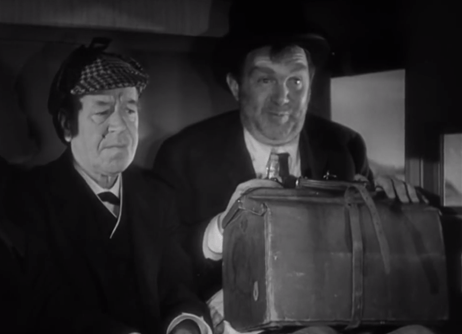
We also have the impeccably named Donald Meek as Mr. Peaccock who is constantly having his name mispronounced while his samples of whiskey are continually finding their way into the Doc’s possession. He’s a calming force just as the entitled banker, Mr. Gatewood, protests just about everything.
If the types sound familiar it’s because you can draw a line between many of them and their progeny for years to come. But the beauty of the character dynamics is the evolution they undergo. We are not simply blessed by starkly different individuals brushing up against each other in close confines. In other words, of crucial importance is how they act toward one another and ultimately how they change over the course of this joint heroes journey.
Claire Trevor, fittingly, later remembered Ford’s chiding of Wayne, “Why are you moving your mouth so much? Don’t you know you don’t act with your mouth in pictures? You act with your eyes.” Watch the film and you understand his direction in actual practice. So much is said in unspoken looks and behaviors. Trevor seems especially adept in speaking with her eyes because everything she wants to say and can’t say comes through this very avenue. And whether John Ford would agree or not, The Duke’s eyes are equally telling.
Interiors are exquisitely framed and lit in such a way allowing the actors to be so expressive while space and staging are used to accentuate those same aspects. Take for example one sequence around a dinner table where two camps find themselves moving to opposite corners. You have the outcasts and the purportedly upstanding citizens opposite one another. Not a word is spoken but it is all played out through mere body language and positioning.
However, Whether the film completely realizes it or not there are other societal casualties, namely the Mexicans shown on the screen as well as the Native Americans themselves. Chris (prolific Mexican-American actor Chris Pin-Martin) at least has a voice but not much else. Meanwhile, it does feel as if the Indians are used essentially for a plotting device. There is no depth present in this regard.
However, the pursuit undertaken by the Apaches is filmed marvelously by Ford. In one particularly memorable long take, the stage lumbers into the distance followed by first four and then an entire wave of riders on horseback. It fluidly suggests immense menace and pace which never quite leaves the sequence.
They are reinforced by a couple shots that feel as if the stagecoach and the horses after it are all but trampling the camera. The sense of volatility is accentuated by the legendary stunt work of Yakima Canutt performing death-defying feats on horseback and hanging from the stagecoach. In the era before readily available CGI, it’s the kind of movie magic still capable of stopping a modern viewer cold.

But the picture does not end there. The city offers other issues that must be resolved. Namely, Ringo’s final showdown with the men who killed his father and kid brother. Also, he must find out what Dallas really is or at least what she is perceived to be.
However, instead of milking the reveals for pure melodramatics, Ford does one better, creating an atmosphere of pure beauty. But within that same framework is a cringe-inducing tension. Pulling his camera away from moments to dwell on reactions as much as actions and movements as much as dialogue. Some of his actors are even given close-ups all the better for studying every expression of their faces.
Because we can write up all that happens in Stagecoach in a matter of sentences. That’s not the engrossing or remarkable part of the picture at all. It’s precisely the way Ford has cast it as only he could. It’s exciting and moving and genuinely light-hearted but it chooses when a certain mood is called for, succeeding in evoking each at the given time like the most visceral vessels of entertainment manage to do.
Thankfully we had many more outings between Ford and Wayne. The director might have given his friend hell on the set but there’s no debating the fact they crafted some of the most iconic westerns together. The collaboration was imperative. Stagecoach rides on the laurels of many people, not least among them Pappy and Duke.
5/5 Stars


